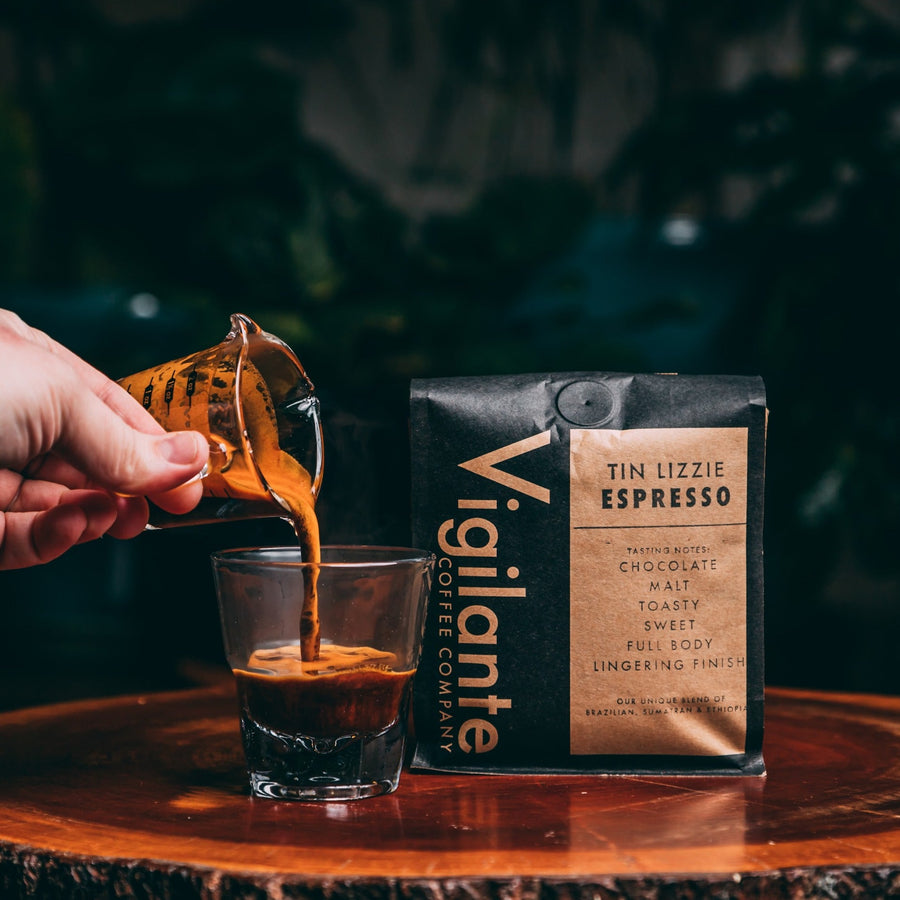The Growing Trend of Choosing SOE Single Origin Espresso at Home
The Growing Trend of Choosing SOE Single Origin Espresso at Home
Blog Article
Comprehending Coffee Beans: the Trip From Espresso to Blended Coffee Beans

The Origins of Coffee: An International Perspective
While you may consider coffee as a modern-day staple, its origins map back centuries, linking with cultures across the globe. The story begins in Ethiopia, where legend states a goat herdsman called Kaldi discovered the invigorating impacts of coffee beans after observing his goats romping vigorously after consuming them. This triggered rate of interest, bring about coffee's spread to Arab traders who treasured the made drink. By the 15th century, it got to Persia, Egypt, and Turkey, where coffeehouses came to be social centers for discussion and society.
As trade paths expanded, coffee made its means to Europe in the 17th century, rapidly gaining appeal. Each culture included its distinct twist to coffee prep work, enriching its history.
Farming and Harvesting of Espresso Beans
As coffee's journey advanced, the emphasis shifted to the farming and harvesting of certain bean varieties, specifically those used for coffee. You'll find that espresso beans usually originate from Arabica or Robusta plants, each offering distinctive flavors. The ideal expanding conditions consist of high altitudes and abundant, well-drained soil, which improve the beans' quality.
During the harvest, choosing methods differ. In some regions, employees hand-pick ripe cherries, ensuring just the most effective fruit goes to handling. In various other areas, mechanical harvesters are made use of, particularly on larger ranches. When the cherries get to peak perfection for maximum flavor., timing is vital; you desire to collect.
As soon as gathered, the beans are gotten ready for processing, which is vital in identifying their last preference. Understanding the cultivation and harvesting processes gives you understanding into what enters into your preferred coffee, enhancing your appreciation for each and every mug.
Handling Techniques: From Cherry to Bean
Since you've found out about harvesting coffee beans, let's discover how those cherries change right into the coffee beans you like. You'll see how various harvesting techniques effect taste, complied with by the vital actions of fermentation and drying. We'll break down the milling and grading procedure that determines your coffee's high quality.
Harvesting Methods Explained
When it pertains to coffee, understanding harvesting methods is essential, given that they directly affect the taste and quality of the beans you delight in. There are 2 primary techniques: careful selecting and strip picking. Careful selecting entails hand-picking only ripe cherries, guaranteeing you get the very best top quality beans. This approach commonly results in a richer flavor account, though it's even more labor-intensive. On the various other hand, strip selecting ways collecting all cherries at the same time, despite perfection. While it's quicker and cheaper, this can lead to a mix of tastes, affecting the final product. Ultimately, the choice of harvesting strategy can significantly influence your coffee experience, so it's worth understanding exactly how those beans made it to your mug.
Fermentation and Drying
After gathering, the following action in handling coffee beans play a considerable role in shaping their taste. You'll locate that fermentation is crucial, as it assists break down the mucilage bordering the beans, boosting their taste profile. Depending on the approach, this process can last from a couple of hours to a number of days, with varying outcomes based on temperature and humidity.
When fermentation is complete, drying out complies with, which is equally vital. You can select from mechanical or sun-drying drying methods. Sun-drying permits the beans to take in tastes from the atmosphere, while mechanical drying warranties constant moisture degrees despite weather condition. Appropriate drying is essential to protect against mold and mildew and preserve the beans' quality, ultimately affecting your cup of coffee.
Milling and Grading Process
As fermentation and drying out established the phase for taste growth, the milling and grading process guarantees that only the finest coffee beans make it to your mug. This phase entails removing the outer layers of the coffee cherry, including the parchment and husk. Top notch beans obtain a greater quality, resulting in a richer coffee experience.
Roasting Strategies: Unlocking Flavor Potential
When you roast coffee beans, the technique you select can drastically influence the taste profile. Comprehending the partnership in between time, temperature level, and toasting methods is crucial to revealing the potential of your brew. Allow's discover just how these components collaborated to develop the excellent mug.
Toasting Methods Discussed
While you might assume that all coffee roasting techniques yield the exact same results, the reality is that each strategy exposes unique taste possibilities in the beans. Drum toasting makes use of a turning drum to equally distribute warmth, enhancing caramelization and generating a balanced flavor. Air roasting, on the various see here now other hand, distributes warm air around the beans, promoting a lighter roast with noticable level of acidity.

Effect On Flavor Account
Different toasting techniques not just influence the process however likewise significantly impact the taste profile of the coffee beans. Dark roasts, on the other hand, bring out strong, smoky tastes, sometimes masking the bean's unique characteristics. Understanding these nuances aids you appreciate the creativity behind your cup of coffee, enhancing your overall experience with every sip.
Time and Temperature Factors
To launch the full flavor potential of coffee beans, both time and temperature throughout the toasting process play substantial duties. When toasting, you'll discover that higher temperatures can quickly create tastes, however if you rush it, you might wind up with scorched notes. On the other hand, lower temperature levels enable a much more gradual taste advancement, showcasing the beans' distinct attributes.

Timing is just as vital; expanding the roast also long can cause a loss of acidity and illumination, while also short a roast could leave the beans underdeveloped. Discovering that sweet area calls for method and experimentation. By readjusting these elements, you can disclose the rich, intricate flavors hidden within each bean, creating an absolutely amazing coffee experience.
The Art of Mixing: Crafting Unique Coffee Accounts

Start by selecting a base coffee that provides a strong structure. A brilliant Ethiopian bean can bring fruitiness, while an abundant Brazilian coffee includes body.
As you mix, bear in mind that each combination narrates. You're not just making coffee; you're creating an experience. Take your time, preference often, and appreciate the journey of uncovering your trademark blend - Single Origin Espresso.
Brewing Methods: How Prep Work Influences Taste
Blending coffee opens up a domain of taste possibilities, but how you make that blend can considerably influence your last cup. On the various other hand, a pour-over highlights the coffee's clearness and illumination, best for showcasing delicate notes.
Coffee, with its high pressure, produces a focused shot that highlights sweetness and crema. If you prefer a lighter mixture, think about a cold mixture method; it produces a smooth, much less acidic preference.
Readjusting variables like water temperature, grind size, and make time can change your coffee's profile. Accept the art of developing to discover the tastes concealed in your coffee blends.
The Future of Coffee: Sustainability and Development
As the coffee sector evolves, sustainability and advancement are ending up being vital for addressing environmental obstacles and conference consumer demands. You'll discover that even more coffee companies are embracing eco-friendly methods, from sourcing beans morally to implementing sustainable farming techniques. These changes not click over here just help the planet however likewise boost the top quality of the coffee you delight in.
You may see technologies like biodegradable packaging and water-saving brewing techniques that decrease waste. Advanced modern technology, such as blockchain, is additionally becoming popular, guaranteeing transparency in the supply chain, which enables you to trace your coffee back to its origins.
Additionally, purchasing local communities and supporting farmers via reasonable profession campaigns promotes a much more sustainable coffee ecological community. As you drink your following mug, bear in mind that your selections can add to a brighter future for coffee. By choosing lasting brand names, you're not simply appreciating a drink; you're making a positive effect on the globe.
Often Asked Concerns
What Is the Difference Between Arabica and Robusta Beans?
Arabica beans are smoother, sweeter, and have a higher level of acidity, while robusta beans are more powerful, much more bitter, and contain even more caffeine. When brewing your coffee., you'll notice these distinctions in flavor and fragrance.
Exactly How Does Altitude Affect Coffee Bean Taste?
Altitude influences coffee bean flavor considerably. Greater elevations produce beans with brighter level of acidity and complex tastes, while lower elevations typically generate beans that are larger and less nuanced. You'll see these distinctions in your cup!
What Are the Wellness Advantages of Alcohol Consumption Coffee?
Drinking coffee can boost your power, improve mental emphasis, and even boost physical efficiency. It's abundant in antioxidants, might lower the danger of certain illness, and can advertise a much healthier metabolic rate when consumed in moderation.
Can Coffee Beans Be Recycled for Brewing?
Yes, you can recycle coffee beans for developing, but the flavor may be weak. If you take pleasure in trying out, try recycling them in various ways, like cold mixtures or including in shakes for an extra kick.
Exactly how Should I Shop Coffee Beans for Freshness?
To maintain your coffee beans fresh, store them in a closed container in an awesome, dark location. Stay clear of exposing them to warmth, dampness, or light, as these variables can rapidly deteriorate their taste and fragrance.
Comprehending Coffee Beans: the Journey From Espresso to Blended Coffee Beans.
Currently that you've discovered regarding collecting espresso beans, let's check out just how those cherries transform into the coffee beans you love.When you roast coffee beans, the technique you select can significantly affect the flavor account - Single Origin Espresso.While you may believe that all coffee toasting approaches generate the very same outcomes, the fact is that each technique reveals special flavor potentials in the beans.Different toasting techniques not just influence the process but also considerably impact the flavor account of the coffee beans
Report this page